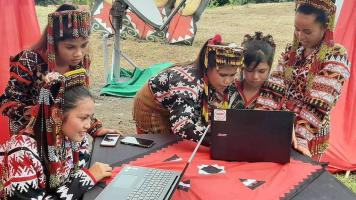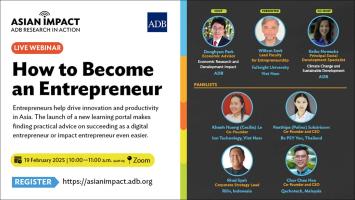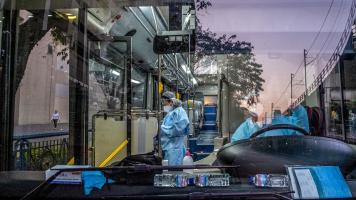It’s Not Always about the Next Big Thing: How 'Innovations of Necessity' are Reshaping Asia
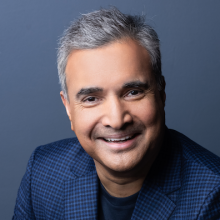
President, Asia Pacific, Mastercard

The transformative nature of simple advances such as connecting people to services and opportunities through affordable smartphones is just as significant as the remarkable progress we are seeing in artificial intelligence. Photo credit: iStock/imtmphoto.
Across Asia, there are examples of how iterative, necessary innovations, like affordable smartphones, are positively impacting people’s lives.
This article is published in collaboration with Mastercard.
I consider myself a technology optimist, particularly in the realm of payments, where machine learning and biometric authentication have revolutionized security. Because of this, what I am about to say may come as a surprise.
I believe it is time to recalibrate our collective fixation on paradigm-shifting technologies such as generative AI and refocus our attention on the iterative, necessary innovations that can have a tangibly positive impact on people’s lives.
From my perspective, the situation on the ground in Asia offers not only reasons why we should do this, but also incredible examples of how it can be achieved.
First, the why. Society’s fascination with disruptive technologies makes it easy to forget that, for many people, disruption is unsettling. For the digitally dispossessed, it can be especially alienating. While much has been said about technological progress in Asia, such stories often overlook the fact that there are large swathes of the population who have minimal, if any, connection to the digital world. Varying levels of digital literacy are also a pressing issue.
Though cutting-edge tech undoubtedly has a role to play in narrowing economic divides, at the grassroots level, we need to consider the degree of digital access that people have today and how we can build on that. Solutions to problems such as inequality demand a human-centric approach rather than a retrofit of “the next big thing.”
Working with what we have
In terms of how this can be done, India’s approach to inclusive growth serves as a masterful example.
In 2014, the Government of India launched an ambitious program, Jan Dhan-Aadhaar-Mobile (JAM), that sought to connect more of the country’s population with formal banking services to improve the disbursement of subsidies and benefits. This involved three key actions: the government backed state and private banks to offer simple, easily established bank accounts geared toward unbanked citizens; they expanded the country’s biometrically enabled Aadhaar national ID card system; and connected these services to individuals’ mobile numbers.
By linking these previously discrete elements, the country’s banked population swelled dramatically in a short period of time as nearly 180 million people opened Jan Dhan accounts within a year of the scheme’s launch. Today, that number has surpassed 510 million, according to India’s ministry of finance. During the COVID-19 pandemic, the JAM program would also prove crucial in providing relief to hundreds of millions of people whose livelihoods were harmed.
Another example is the Philippines’ GCash system, which took a similar approach of working with what people already had, basic mobile phones, rather than trying to drive uptake of something entirely new. Launched in 2004, it allowed users to make e-money transfers via SMS and top up their balances at easily accessible locations like convenience stores. Fast forward to today, and GCash’s parent company says the system has more than 80 million active users nationwide and has evolved to enable QR code transactions, bill payments, and high-yield savings accounts.
In Asia, the transformative nature of simple advances such as connecting people to services and opportunities through affordable smartphones is, to me, just as significant as the remarkable progress we are seeing in artificial intelligence. The examples I have given are just two from a region brimming with innovative solutions that do not attempt to reinvent the wheel. These approaches meet people where they are and build from there.
A future rooted in the here and now
Looking ahead, it is clear that we are naturally predisposed to thinking of innovation with sweeping visions of a vastly different—and typically much brighter—future. And yet, if revolutionary new technologies are to have any hope of achieving widespread, meaningful impact, we need to build bridges across the digital divide with simple innovations that broaden access to tangible benefits, while also drastically reducing the cost to serve—two necessary ingredients for inclusive growth.
Priority number one? Extending credit access to small and micro businesses across the Asia and the Pacific region, an area of tremendous need and opportunity. And one where we can absolutely repurpose existing infrastructure and capabilities to empower people and power economies at scale.
To manifest such goals into reality, let us find inspiration in and encourage incremental improvements that strengthen a foundation of resilience, just as much as we celebrate the successes of paradigm-shifting innovators. In doing so, we lower the barriers to entry, bring more people along on the journey, and create a marketplace where no single person or entity has a monopoly on innovative ideas. At a time when there are so many human needs to be addressed, we need all the ideas we can get.
This article was first published by Time.
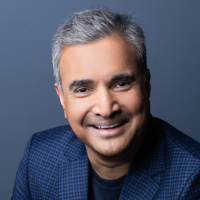
Ari Sarker
President, Asia Pacific, MastercardAri Sarker joined Mastercard in 2011 and has since held an array of leadership roles across geographies. He is currently president of Asia–Pacific, overseeing all of the company’s activities in the region. He is also a member of the Global Management Committee. He is an active proponent of Mastercard’s financial inclusion commitments, and a dedicated champion of inclusive growth efforts across a number of Asia’s emerging economies.
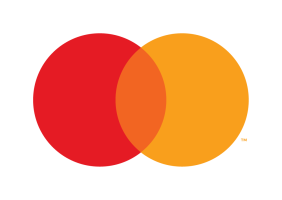
Mastercard
Mastercard powers economies and empowers people in 200+ countries and territories worldwide. Together with our customers, we’re building a sustainable economy where everyone can prosper. We support a wide range of digital payments choices, making transactions safe, simple, smart, and accessible. Our technology and innovation, partnerships, and networks combine to deliver a unique set of products and services that help people, businesses, and governments realize their greatest potential.
